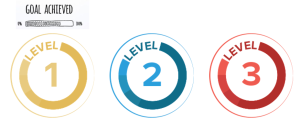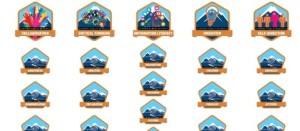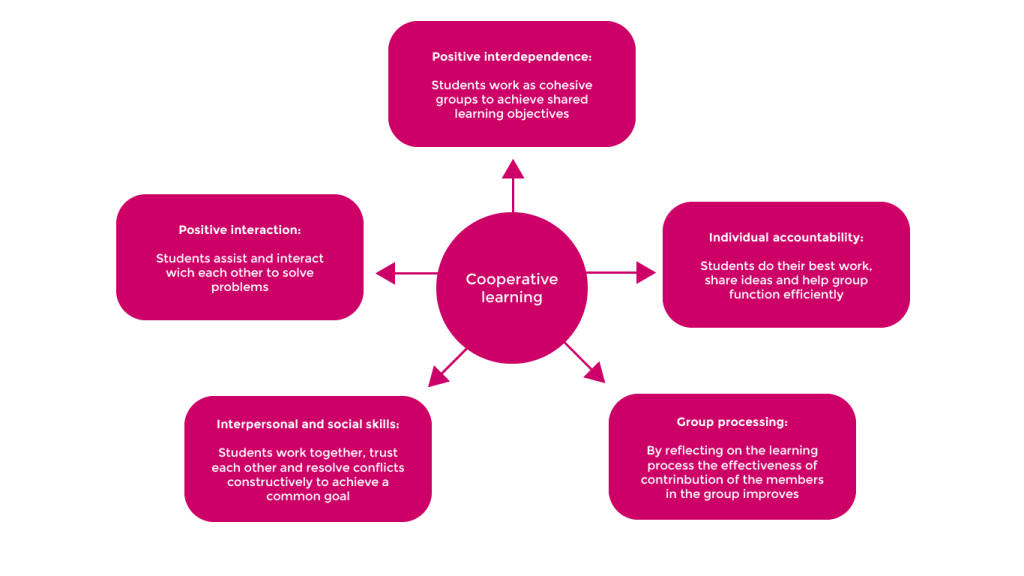Classroom actions
The emerging cognitive neuroscience of reward, memory and their interrelation promises a new perspective on the potential role of reward in education, and particularly in the development of educational games.
– Howard-Jones & Jay (2016:70)
This section presents the inspiration for classroom actions you can try in your classroom. As mentioned above, there is no one size fits all, so experimentation and further catering to your specific context are key.
Classroom action 1: quizzes
Quizzes are an easy tool to engage your students. Quizzes make use of the strategy ‘rewards’: if a student gives a correct answer to a question, she or he receives one or more points. As explained in section 3.3.1, rewards trigger the release of dopamine, thereby increasing the activity in the reward system and brain regions involved in attention and memory formation. Rewards thus enhance engagement with the learning opportunity.
Quizzes are effective in engaging your students at the beginning of your class. You can use the quiz to activate your students’ prior knowledge about today’s topic. Or, you can use the quiz to consolidate knowledge, for example, what they learned in the previous class.
You can, however, also use a quiz throughout your class. In this way, the quiz keeps students engaged and motivated during your class. You can even add a challenge: try to score at least 10 points.
Whereas the examples above use certain rewards, you can also make use of reward uncertainty in your quiz. In this case, a chance factor determines whether a student ‘wins’ the reward or not. Chance-meditated rewards motivate students to seek opportunities to have a shot at winning a reward. As such, they increase students’ engagement (see What does educational neuroscience say? > Strategies that trigger the reward system and engagement > Rewards)
Instead of giving your students a certain reward after providing the correct answer to your question (i.e. correct answer = one point), you can let students choose the number of points themselves by selecting one of three/four boxes.
| 0 points | 3 points | 1 point | 2 points |
Other options are using a wheel of fortunes or dice to determine how many points a student wins.
You play your quiz in small teams. If the answer to a question turns out to be correct, the team has two choices:
- (1) receive one point (= certain reward);
- (2a) take a chance (=uncertain reward) and receive either three or zero points based on a spin of a “wheel of fortune” that has a 50/50 chance of landing on “win” or “lose”.
- (2b) take a chance and receive points based on throwing one or two dice.
Classroom action 2: Gamification
Gamification refers to the use of game mechanisms in an educational context (Kapp, 2012). Some examples of game mechanisms are missions, challenges, levels, rewards, real-time feedback, countdown, and boosters. Game mechanisms which can be used to engage students in learning opportunities are:
- Levels
- Badges
- XP-points
These game mechanisms are examples of the strategy ‘rewards’ and ‘challenging tasks’ and thus can be used to influence the release of dopamine and the activation of the reward system (see Rewards and Challeging tasks). A benefit of these game mechanisms is that they may engage and motivate students for a more extended period.

Like in games, your students progress from one level to the next. Your levels can be equivalent to your learning objectives or to (challenging) assignments students must accomplish. Students can move to the next level when they achieve a previous level’s goal. Providing clear success criteria and immediate feedback to your students is essential to keep students engaged and motivated.

The idea of badges is borrowed from the Scouts Association. When students prove mastery of a particular set of learning objectives, they receive a badge. Providing clear success criteria for obtaining a specific badge is essential. Badges can be spread throughout the semester.
Unlocking a new level or obtaining a badge does not have to be an all-or-nothing event. You can offer students some choice by using XP-point (XP= experience). In this case, students must collect specific points to unlock the next level or receive a badge.
Example: To unlock level 2, you have to collect 10 XP-point. You can choose from the exercises below:
- Exercise 1: 5
- Exercise 2: 3
- Exercise 3: 5
- Exercise 4: 2
- Exercise 5: 3
These XP-points can also be used to ‘buy’ boosters. Boosters are additional resources a student can use to complete an assignment. For instance, the course book, a reference book, a dictionary, calculator, periodic table, atlas, etc.
Classroom action 3: Use hooks at the start of your class
Start with a good headline (Churches et al., 2017:42). As discussed in Novelty and curiosity, our brain is sensitive to novelty and curiosity. Novelty and curiosity are especially interesting strategies to use at the beginning of your class to ‘hook’ your students in. Novelty and curiosity help engage your students in the upcoming new learning opportunity.
Some hooks you can use at the start of your class:
- an interesting picture or video
- an intriguing or thought-provoking question or problem
- an unusual perspective on today’s topic
- a novel context in which students have to apply their prior knowledge
- an ambiguous statement that needs further explanation and thought
- a different approach than usual, e.g. let students generate their own questions about today’s topic
Classroom action 4: Cooperative learning
Cooperative learning is based on the human need for social exchange, goal setting and relationship acquisition.
– Tokuhama-Espinosa, (2014:207)

Cooperative learning is a type of active social learning in which students work together in small groups to achieve a common goal, e.g. learning new concepts or solving a challenging assignment. Cooperative learning thus takes advantage of the strategy of ‘sharing information and attention’ (see Sharing information and attention) and helps engage students more in the learning opportunity. In cooperative learning, students are encouraged to share information, pay attention to each other, listen to each other, discuss ideas, ask questions, and collaboratively formulate solutions to a problem.
Five essential elements of cooperative learning are (Johnson & Johnson, 2009):
An often-used teaching method is the jigsaw:
- The teacher provides students with a problem or challenge.
- Students are divided into small groups and become experts in a particular part of the subject matter needed to solve the problem or challenge (round 1)
- Students share their knowledge with non-experts (round 2). The group needs everyone’s expertise to solve the problem or challenge collaboratively.
If you want to read more about cooperative learning:
- Ashman, A., & Gillies, R. (Eds.). (2003).Cooperative learning: The social and intellectual outcomes of learning in groups.
- Gillies, R. M., Ashman, A. F., & Terwel, J. (2007). The teacher’s role in implementing cooperative learning in the classroom. Springer.
- Johnson, D. W., Johnson, R. T., & Smith, K. A. (2014). Cooperative learning: Improving university instruction by basing practice on validated theory.Journal on Excellence in University Teaching, 25(4), 1-26.
- Johnson, D. W., & Johnson, R. T. (2009). An educational psychology success story: Social interdependence theory and cooperative learning.Educational researcher, 38(5), 365-379. doi:3102/0013189X09339057
- Johnson, D.W., Johnson, R.T., and Smith, K.A. (2006). Active learning: Cooperation in the university classroom. Edina, MN: Interaction.
- Kagan, S. & Kagan, M. (2013). Cooperative Learning Structures. Kagan Publishing
- Kagan, S., & Kagan, S. (1994).Cooperative learning. San Clemente, CA: Kagan.

